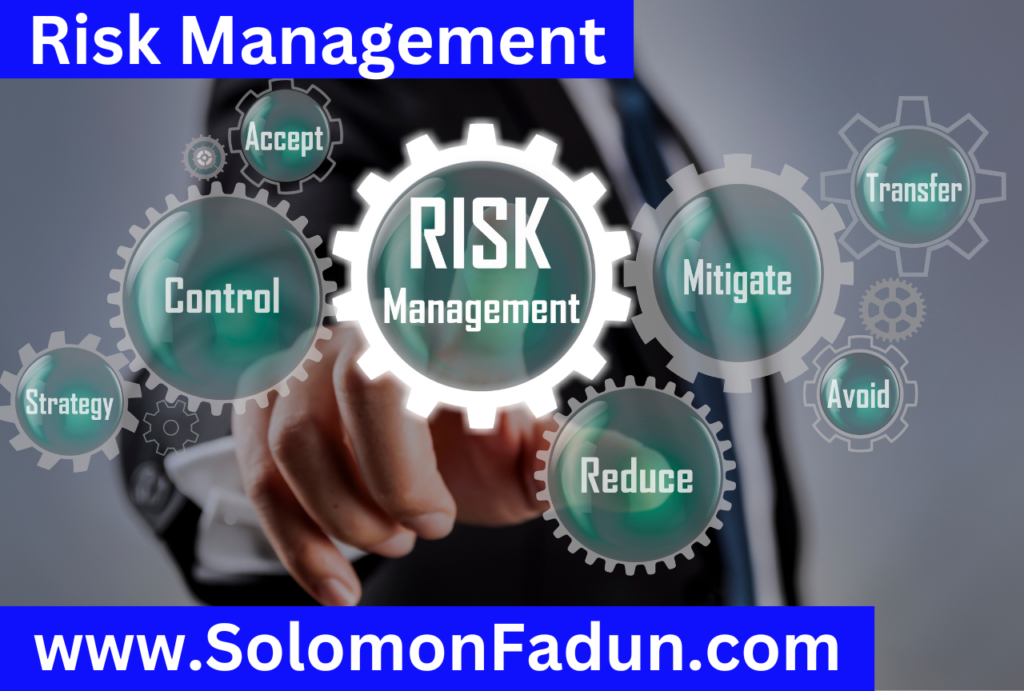What is Risk Management and Why is it Important in an Organisation?

This post discusses the meaning and importance of risk management within an organisation.
WHAT IS RISK MANAGEMENT?
Risk management encompasses identifying, analysing, and responding to risk factors that form part of the life of a business. Risk management identifies, assesses, and controls threats to an organisation’s capital and earnings. Effective risk management means influencing future outcomes as much as possible by acting proactively rather than reactively. Therefore, effective risk management offers the potential to reduce the possibility of a risk occurring and its potential impact. These threats or risks could stem from various sources, including financial uncertainty, legal liabilities, strategic management errors, accidents, and natural disasters. IT security threats, data-related risks, and risk management strategies to alleviate them have become a top priority for digitised companies. Hence, the importance of risk management within an organisation.
IMPORTANCE OF RISK MANAGEMENT
Risk management is beneficial to individuals, businesses, and organisations. Effective risk management ensures that risks of high priority are dealt with as aggressively as possible. Moreover, the management will have the necessary information that they can use to make informed decisions and ensure that the business remains profitable. Essential benefits of risk management include:
1. Creates a safe and secure work environment for all staff and customers.
2. Increases the stability of business operations while also decreasing legal liability.
3. Protects from events detrimental to the company and the environment.
4. Protects all involved people and assets from potential harm.
5. Helps establish the organisation’s insurance needs to save on unnecessary premiums.
The importance of risk management regarding patient safety has also been revealed. The risk management and patient safety departments in most hospitals and organisations are separated; they incorporate different leadership, goals, and scope. However, some hospitals recognise that providing safe, high-quality patient care is necessary to protect financial assets and, as a result, should be incorporated with risk management.
RISK MANAGEMENT STRUCTURES
A risk management structure should do more than identify potential risks. A good risk management structure should also calculate the uncertainties and predict their influence on a business. Consequently, the result is a choice between accepting risks and rejecting them. Risk acceptance or rejection depends on the tolerance levels a company has already defined for itself.
RISK MANAGEMENT STRATEGIES
Risk management strategies should also attempt to answer the following questions:
1. What can go wrong?
2. How will it affect the organisation? Consider the probability of the event and whether it will have a large or small impact. Consider both the workplace as a whole and individual work.
3. What can be done? What steps can be taken to prevent the loss? What can be done to recover if a loss does occur?
4. If something happens, how will the organisation pay for it?
RISK MANAGEMENT PROCESS
There are five basic steps in managing risks. These steps are known as the risk management process. Here are the five steps of a risk management process:
Step 1: Identify the Risk. The company identifies and defines potential risks that may negatively influence a specific company process or project.
Step 2: Analyse the risk. After identifying potential risks, the next thing is to determine the likelihood and consequence of each risk.
Step 3: Evaluate and Rank the Risk. The company must decide whether the risk is acceptable or severe enough to warrant treatment.
Step 4: Treat the Risk – also known as Risk Response Planning. During this step, companies assess their highest-ranked risks and develop a plan to alleviate them using specific risk controls.
Step 5: Monitor and Review the risk. This is where the company should use the Risk Register to monitor, track and review risks. The mitigation plan includes following up on risks and risk plans to monitor and track new and existing threats.
RISK MANAGEMENT APPROACHES AND RESPONSE TO RISKS
The importance of risk management cannot be over emphasized. An organisation can use several strategies and approaches to manage a firm’s risks. Generally, there are four major risk management strategies and responses to risks: risk avoidance, risk reduction, risk transfer, and risk retention.
PRACTICAL EXAMPLES OF RISK MANAGEMENT
The importance of risk management can be demonstrated using practical examples. One example of risk management could be identifying the risks associated with opening a new location. They can mitigate risks by choosing areas with much foot traffic and low competition from similar businesses. Another example could be an outdoor amusement park that acknowledges its business is entirely weather-dependent. The park might choose to spend low and consistently build up cash reserves to alleviate the risk of a large financial loss during a bad season.
Another example could be an investor buying stock in an exciting new company with a high valuation even though they know it could significantly drop. In this situation, risk acceptance is demonstrated as the investor buys despite the threat and feel that the large reward’s potential outweighs the risk.
See the full video on the meaning and importance of risk management: https://youtu.be/KcCmCZoQVvE

VIDEO TIMESTAMPS
00:00 – Introduction
00:33 – Meaning of risk management
01:57 – Roles of risk management
02:42 – Meaning of risk assurance
04:37 – Purpose of risk assurance
05:17 – Benefits of risk assurance
05:49 – Responsibilities of the audit committee
08:15 – Risk assurance: Review and monitoring
08:58 – Sources of risk assurance
10:05 – Risk assurance professionals’ roles
10:35 – Roles of risk assurance
15:18 – What is General Data Protection Regulation (GDPR)?
16:28 – Roles of risk assurance profession within an organisation
19:10 – Conclusion

